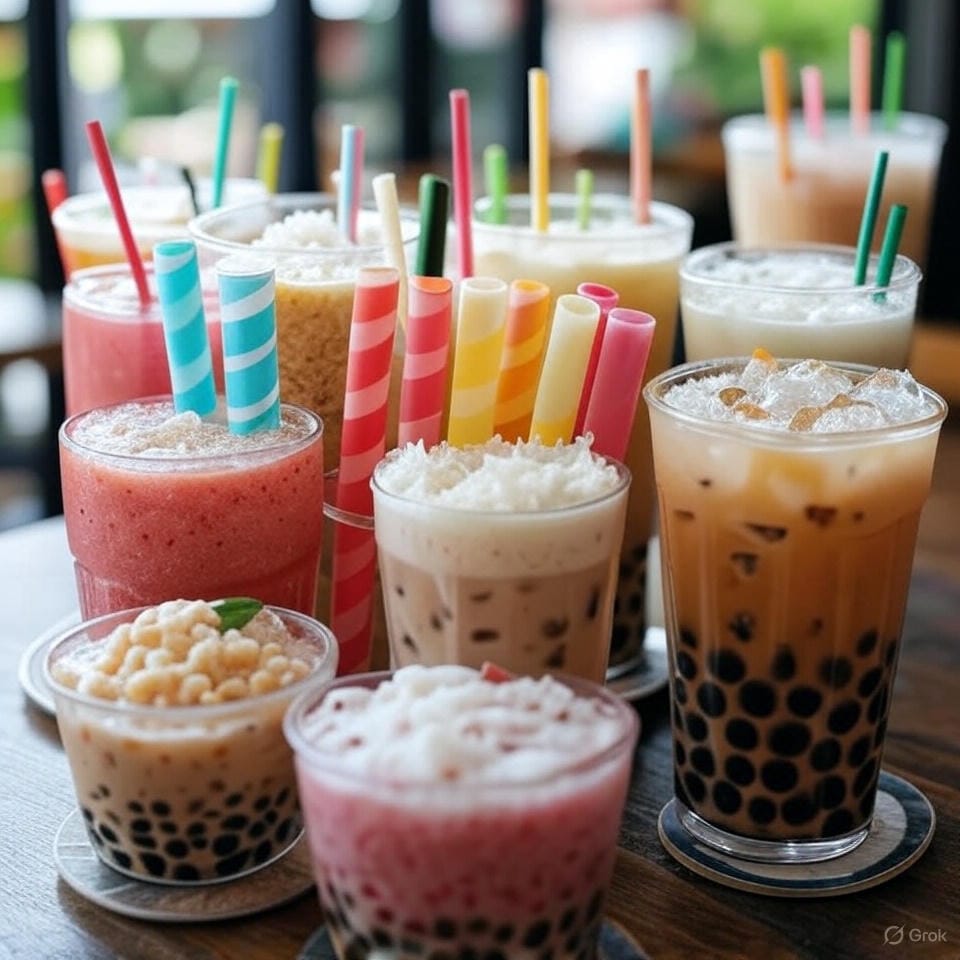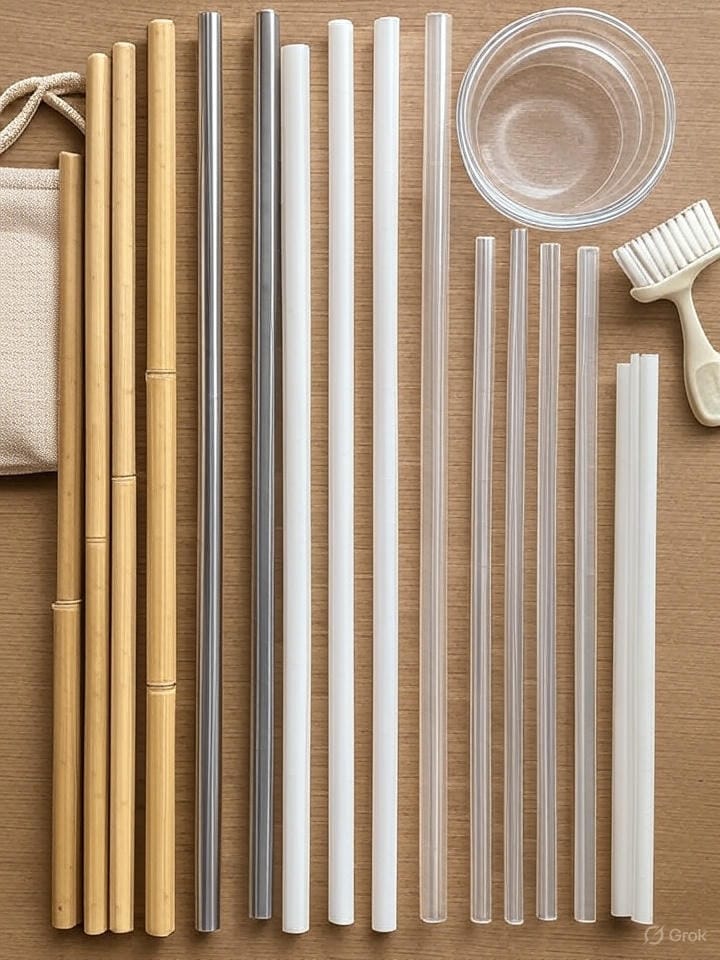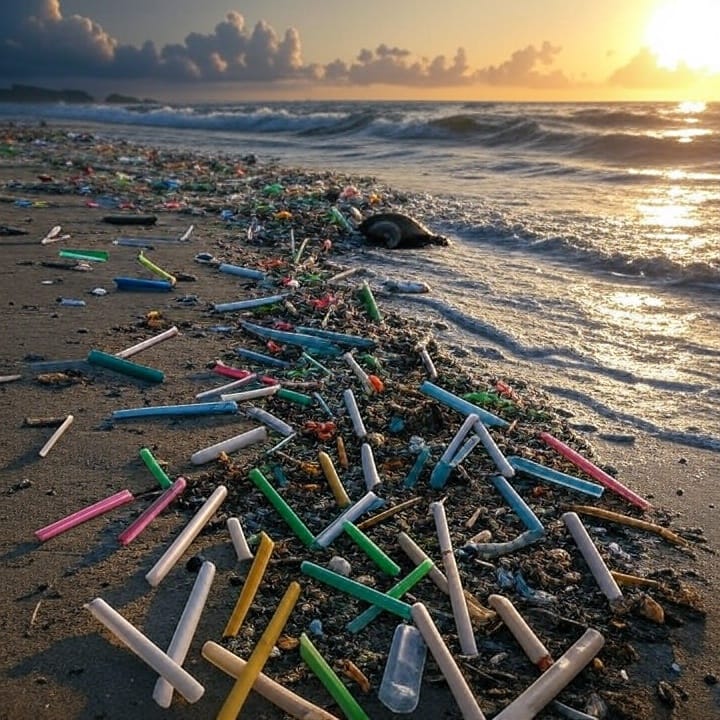
Table of Contents
ToggleWhy We Need eco friendly Alternatives to Paper Straws
In today’s busy life straws may appear insignificant to us but their impact on the environment is not negligible. Billions of plastic straws are used for just a few minutes and then discarded. They cannot be effectively recycled and that’s why most of them end up in landfills or drift into oceans. These tiny tubes appear as food for marine life. A turtle swallowing a straw or a seabird pecking at it can cause life-threatening harm. This is why straws have become a striking symbol of our plastic crisis.
Paper straws were introduced as a quick solution to this issue. They were represented as a greener option but the reality has disappointed us. They become soggy within minutes, sometimes they leave an odd aftertaste and in certain cases they’re treated with chemicals to make them water-resistant. Instead of being the answer paper straws highlighted a bigger truth – To replace plastic we need stronger & smarter eco-friendly alternatives.
This realization has sparked innovation. Today we have many eco friendly alternatives to paper straws and plastic straws like – bamboo, stainless steel, silicone, glass and even edible straws. All these options are reshaping how we think about something very ordinary. These alternatives have shown that no matter how small, our everyday choices can influence the health of our planet. As demand for eco-friendly products is growing the conversation is no longer about convenience alone. Now it’s about making choices that align with a cleaner & more responsible future.
| Straw Type | Key Benefit | Drawback | Best For |
|---|---|---|---|
| Paper | Biodegradable & widely available | Soggy in drinks; short-lived | Short events, single-use needs |
| Bamboo | Natural, compostable, antimicrobial | Requires care; slight taste for some | Cafés, home use, eco brands |
| Metal (Stainless) | Very durable; long-term cost saver | Conducts temperature; rigid | Daily use, travel (with pouch) |
| Silicone | Soft, flexible, kid-friendly | Not biodegradable; needs washing | Families, toddlers, sensitive teeth |
| Glass | Elegant, easy to inspect for cleanliness | Fragile; careful handling required | Premium cafés & home entertaining |
| Bioplastic / Edible | Plastic-like feel; some compostable types | Needs industrial composting or short life | Events, desserts, novelty uses |

What are Edible straws options for sustainability?
Edible straws have quickly gained popularity as one of the most creative solutions for single-use waste. Unlike paper or plastic straws, they can be consumed after use, which turns a simple drink into a fun and zero-waste experience. They align perfectly with growing “circular economy” mindset where products either return to nature or become part of consumption.
Many edible materials have been explored like – pasta straws which are sturdy, affordable and commonly used in European cafes. They provide a good shape in cold drinks but get soft faster in hot liquids. Rice straws are popular in Asian markets as they are gluten free, firm and biodegradable even if not eaten.
Seaweed-based straws stand out for being highly sustainable because they grow rapidly without soil or freshwater. These straws add minimal taste and degrade naturally if not consumed. Sugar-based straws, as the name suggests, are often flavored to provide a sweet twist and work well in desserts or cocktails. This functionality helps them to gain hits at parties and events.
Drawbacks of edible straws .
The main challenge lies in durability, cost and shelf life. The lifespan of edible straws is generally shorter than metal or bamboo straws and they’re also expensive for mass production. Yet still they represent a powerful branding opportunity for cafés, restaurants and eco-conscious events that want to offer novelty. Moreover, Edible straws are steadily improving in strength and availability. They may not replace reusable options but they’re carving a unique niche – practical and playful.
Environmental cost breakdown of different straws
The choice of a straw may look small, but its environmental footprint is surprising to us. Traditional plastic straws are non-biodegradable, which means every straw used will exist somewhere in landfills or oceans. They contribute significantly to marine pollution, where countless sea animals see them as food. As a result they suffer from injuries or sometimes they die.
Even paper straws require heavy water and energy for production and they also include chemical coatings that slow down their decomposition. On the other side, eco friendly alternatives of paper straws create much smaller impact. Bamboo straws are biodegradable and sourced from fast growing plants that require no fertilizers. Metal and glass straws can be reused for years to reduce waste from single-use straws. Edible straws are another innovative solution with zero environmental footprint.
Another crucial factor is carbon emission. We know that plastic production emits significant greenhouse gases. Yet the manufacturing of bamboo or silicone straws generates far lower carbon emissions. When these eco-friendly straws reach their end of life cycle, they either decompose naturally or they can be recycled without harming ecosystem.
According to a U.S. EPA study, using paper or biodegradable straws instead of plastic can lead to environmental trade-offs, such as higher energy and resource consumption. By comparing the environmental costs side by side it becomes clear for us that choosing sustainable straws isn’t just about convenience – it’s about reducing waste, conserving our resources and protecting biodiversity.

Health and safety Considerations of eco friendly straws
Health and safety both are equally important as sustainability when we are switching to eco friendly alternatives of paper straws. Every straw has its own pros and cons.
1. Bamboo straws: As discussed earlier, these straws are chemical-free and naturally antimicrobial, which reduces bacterial buildup on their surfaces. However, they must be regularly cleaned and dried to prevent mold growth
2. Metal straws: Stainless steel straws are durable and safe. They can be used for years but they conduct temperature. With very hot or cold drinks they become uncomfortable and even risky for sensitive teeth. Hence a protective silicone tip is recommended.
3. Glass straws: These straws are hygienic and easy to sterilize. They are transparent hence users can see if they’re clean or not. The main safety concern is breakage. Yet now high-quality tempered glass is used to reduce this risk.
4. Silicone Straws: They are soft and flexible. Silicone straws are especially safe for children and people with sensitive teeth. They are also heat-resistant. However, poor-quality silicones contain filters, and hence it’s important to buy certified food-grade silicone.
5. Edible Straws: There is no safety risk when edible straws are consumed. These straws may dissolve or lose structural integrity in some drinks. Allergies (gluten in pasta straws) should be considered before serving it widely.
How to choose the perfect eco friendly straws
There are so many sustainable straw options are available but the best choice often depends on your lifestyle and personal priorities. Instead of asking which straw is ‘perfect,’ you should focus on what matters to you.
- For everyday use at home: Bamboo straws become a natural pick. They’re biodegradable, easy to maintain and they give a rustic feel to drinks.
- For long-term durability: Stainless steel straws are nearly indestructible and ideal for those users who want long-term use in a single purchase.
- For kids or sensitive teeth: Silicone straws are soft, flexible and safe which makes them comfortable and practical for families.
- For style and transparency: glass straws often add elegance to beverages and they also allow you to see inside (if they’re clean). But remember, they require careful handling.
- For fun or special occasions: edible straws like pasta, rice or sugar based are best. They bring novelty and zero waste but they’re not made for daily use because they are expensive.
Consider maintenance, cost, and disposal when you are going to buy straws. Reusable straws need proper cleaning and compostable straws work best only if you have access to compost facilities. Every straw has its pros and cons. You can enjoy a better drinking experience by matching your choice with your needs.

Global adoption and real world examples
The shift to eco-friendly straws is no longer a niche for us; it has become a global movement. Different countries, cafes, and brands are adopting sustainable alternatives in creative ways.
Europe: many European Nations have banned single-use plastics including straws. This step has compelled cafes and restaurants to switch on bamboo, paper or reusable straws. This regulatory approach not only reduces waste but also sets a global example.
United States: Big brands like Starbucks and McDonald’s have introduced reusable straws and encouraged customers to bring their own straws. For instance let’s take an example of Starbucks which offers metals and silicone options in selected stores. This makes sustainability a part of the customer experience.
India: bamboo and wheat-based straws are gaining popularity, and it is also supported by government campaigns to promote biodegradable alternatives. Many eco-conscious cafes now showcase these straws as a unique selling point. They have merged culture with sustainability.
A few other notable examples are from Australia and Japan. Some beachside cafes provide edible seaweed straws for smoothies in Australia. And in Japan, premium dining spots favor glass straws for aesthetic and hygiene purposes.
These examples show that eco-friendly straws are versatile and adaptable from policy-driven adoption to brand-led initiatives with cultural integration. Highlighting real world to demonstrate practicality was not my only aim, but to also build credibility for readers.
Conclusion
Eco friendly alternatives of paper st raws are more than just a trend. They’re practical step towards reducing plastic pollution. Whether it is a durable metal and elegant glass straw or kid friendly silicone, bamboo and edible straw, each serves a specific type of need to promote sustainability. Global adoption proves that small changes can make big impact. By making perfect choices we can sip responsibly and contribute to a cleaner planet.
